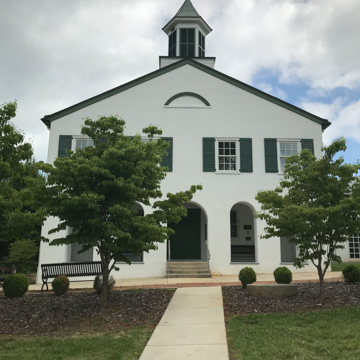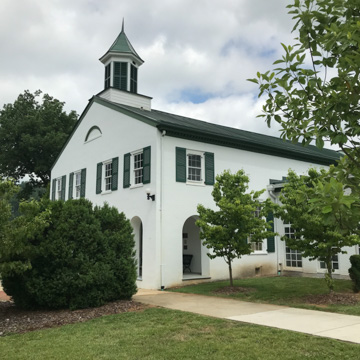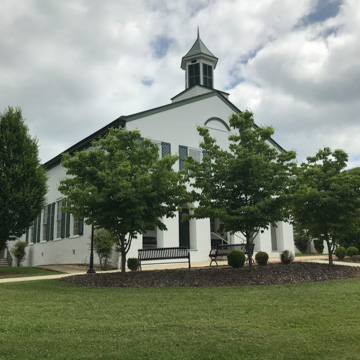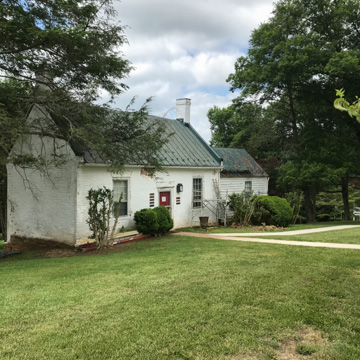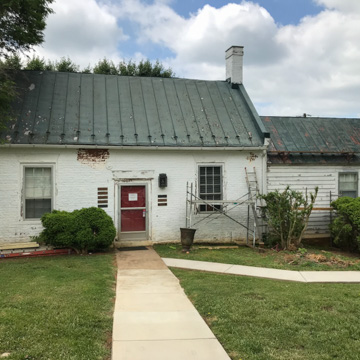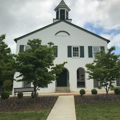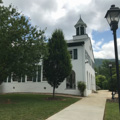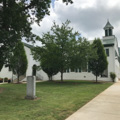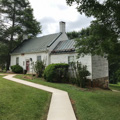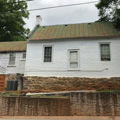The seat of Nelson County was established here in 1809 on land owned by James Loving. This arcaded courthouse follows in a long line of public buildings that date back to English Renaissance arcaded town halls and markets. Virginians perpetuated the building form in the early eighteenth century with the arcaded Wren Building and Capitol at Williamsburg. Nelson County's courthouse was completed under the supervision of Varnum from a plan by Crosthwait (Crostwaite), a county justice. Crosthwait was probably familiar with the Fairfax County courthouse of 1799–1800, perhaps the only Virginia example of a two-story courthouse with a one-story arcade constructed prior to this one. He drew several variations of his plan before arriving at a final version. The temple-form brick building, stuccoed and scored to resemble stone, has a decidedly individualistic appearance. The low-pitched front gable has a shallow eaves projection and is crowned with a hexagonal, louvered cupola. Although the second story has only four windows above the five-bay, first-story arcade, the facade nevertheless achieves a balance with its larger central arch and a lunette in the gable. Unlike later and more sophisticated temple-form courthouses, Nelson's lacks second-floor windows on the side walls. Inside, the jury rooms, which are located above the arcade, lead to a balustraded spectator gallery that overlooks the large courtroom on the first floor.
The courthouse probably influenced the shape of the Page (PG1) and Madison (PI11) ourthouses, and, perhaps, the Caroline County courthouse. Built in the early 1830s, these two-story buildings also have ground-story arcades. Page and Madison were built by master builder and brick mason William B. Phillips and carpenter Malcolm F. Crawford, both of whom worked for Thomas Jefferson from 1817 to 1822 on the construction of the University of Virginia. Before they built the Page and Madison courthouses, Phillips and Crawford were here in Lovingston constructing the second Nelson County Jail (NE2) and thus knew its arcaded courthouse, as well as the arcaded buildings at the university.
The large brick Judicial Center that faces Court Street was designed by a Lynchburg firm. The three-bay law office facing the courthouse was originally the first Nelson County Clerk's Office (c. 1811; 1940 frame addition). It is a white-painted brick building with rough stone foundations, a molded brick cornice on the front, parapeted elbow gables, and interior-end chimneys.















